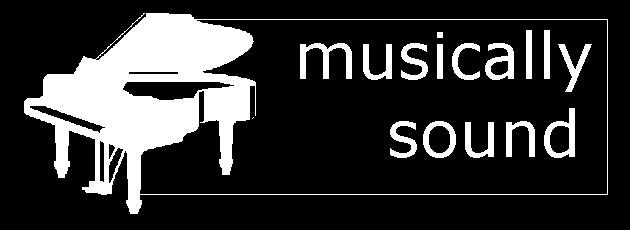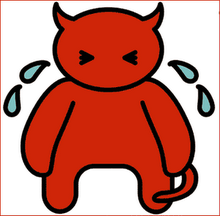 Revolution / Sumo Digital
Revolution / Sumo DigitalBroken Sword: The Angel of Death
[Adventure]
For reasons known only to the worldwide gaming press, the Broken Sword series has never quite garnered the praise it deserves. The first game in the series, 1996's The Shadow of the Templars, set new standards in cinematic adventuring, and follow-up The Smoking Mirror, though rushed out in little over a year, was a similarly excellent game. The move to 3D in 2003's The Sleeping Dragon was practically seamless, featuring gorgeously realised environments, a typically diverse collection of characters and a strong storyline.
However, there was something quite unusual about BS3 in that, despite an already strong fan base, modernised controls and simplified puzzles, the game sold poorly, shifting barely any units on consoles. This has led to something of a knee-jerk reaction from Revolution, who have not only decided to return to the traditional point 'n' click interface of old, but have also taken the decision (or been told) to make BS4 a PC exclusive. This decision has backfired severely, resulting in a game that feels tired and dated, though one which admittedly retains just enough retro charm and tricks of the trade to avoid being a total disappointment.
The starting point in assessing any adventure game is obviously the strength of its story and, surprisingly, the plot in The Angel of Death is much weaker than one might expect. Discredited after the "Glastonbury incident" in BS3, chiselled chump George Stobbart is now working as a bail bond clerk in New York. One day, a mysterious and suspiciously buxom blonde goes to see George about - you guessed it - an ancient manuscript which she is hoping to decipher. An offer of $10000 is enough to convince George that he should come along for the ride, but before he can dust off his adventuring cap, the office is invaded by an unpleasant-looking crew of Italian mobsters. They appear to be pursuing Anna Maria and her manuscript and thus, without hanging around to peruse the finer details of the thugs' intentions, George and his sidekick escape the office and seemingly head off on yet another journey brimming with elements of history, mythology and intrigue.
While this might sound exciting, the beginning of the game develops slowly and, despite occasional twists and turns, predictably. In an attempt to counteract this, the second half of the game is something of a mess, with numerous loose ends, unexplained motives (for example the sudden and inexplicable appearance of Nico), and an unsatisfying conclusion. The final third of the game also feels far too short, while the opening two thirds feels too long, creating a sense of imbalance. In addition, certain characters are unnecessarily overdeveloped, with key proponents in the game's storyline easily mistaken as minor characters. Whether this is a technique deliberately employed in order to deceive the player is unclear, however what is perfectly lucid is that Revolution have not given certain characters the attention they deserve.
Furthermore, the cutscenes of the game present the idea of a thrilling chase across Europe, with all sides caught up in a race against time to stop their adversaries from succeeding. While this approach certainly pays dividends in the movies, it does not lend itself well to the ambling pace of point 'n' click adventure games. Whereas previous games in the series saw George strolling around, picking up the odd clue and engaging in casual conversation, BS4 fails to successfully tap in to the mechanics of the genre. It is quite ridiculous, for example, when the player is forced to postpone the relentless pursuit of the bad guys in order to decide which item to combine with the paperclip.
Though The Angel of Death's story might not hold your attention, the puzzles certainly will, with a terrific blend of traditional "use x on y" situations and arguably the finest logic and riddle-based puzzles ever seen in a game of this type. While there are inevitably going to be one or two puzzles where the solution may seem a little obtuse, for the most part each puzzle strikes a perfect balance between difficulty and achievability. For example, one section of the game involves deciphering riddles from a manuscript by cross-referencing cryptic imagery with information available on an internet database (one of the many functions of the new PDA gadget). This is the first game I can recall where using Wikipedia might be considered a genuine (though by no means necessary) path to a solution!
It is worth mentioning at this point that The Angel of Death is the first game in the series that hasn't been developed by Revolution. Though Charles Cecil and co. are behind the story and the puzzle mechanics, it was Sumo Digital's responsibility to bring the project to life. And they certainly came on board with a glowing reputation: an amalgamation of Infogrames and Gremlin, they've produced recent hits TOCA Race Driver 2 and Virtua Tennis: World Tour. However, both the graphics and the gameplay of BS4 fall substantially short of the mark, with the latter in some cases reaching almost game-breaking proportions.
Considering there are so few environments in the game, it is disappointing that all of them look extremely washed-out, uninspired and insipid. The graphics are substantially worse than those found in the previous game, leading this reviewer to wonder why on earth Sumo were needed in the first place. That said, how the game looks is largely irrelevant, given the genre of game, and at least the graphics are functional enough to avoid hindering the puzzle solving.
What is a complete disaster, however, is the game's control system. Returning to the point 'n' click style of old, what Sumo have failed to successfully achieve is incorporating the classic controls into 3D environments. They do not help themselves by modelling almost all of the interior environments on an exact ninety degree axis, meaning that going through doors at the left and right of the screen can be, at times, extremely difficult. Add to this the fact that, in the larger outdoor environments, the camera is almost constantly in motion and BS4 makes for a frustrating experience to say the least. Just moving George from one building to another feels as though it is taking twice as long as it should, and our hero's movement is again hindered by the 'speed of movement' defaulting to walk every time the player interacts with the environment.
In contrast, the audio of the game continues the impeccably high standards set by Revolution in previous titles. The quality of the score means it now merits its own release in an official soundtrack and, despite an appallingly amateurish turn by Nico's actor, most of the characters are done justice with some compelling voice work. Rolf Saxon again excels himself as George Stobbart, now the suave, charming adventurer as opposed to the bumbling fop of old.
On the face of it, then, it doesn't look all good for The Angel of Death. The game feels rushed and unbalanced, the plot is unsatisfying, the controls are abhorrent and the environments look decidedly dull. However, as a long term fan of the series, it is hard to deny that there's nothing quite like a Broken Sword game. Yes, here comes the old allusion that "they don't make 'em like this anymore", but it's true, and in one sense the archaic, challenging and insular nature of adventure games is part of what makes them so appealing. Broken Sword: The Angel of Death is the most niche title in the series, demanding the most patient and unassuming of gamers, however if you fit that description, you should find yourself having more fun than you might expect. Otherwise, stay well clear. 59



No comments:
Post a Comment